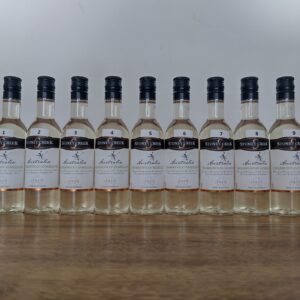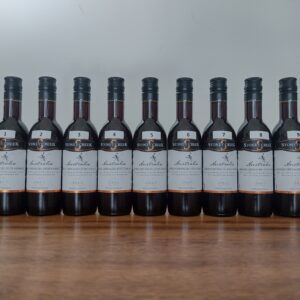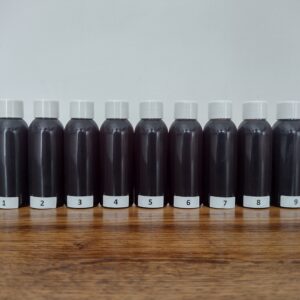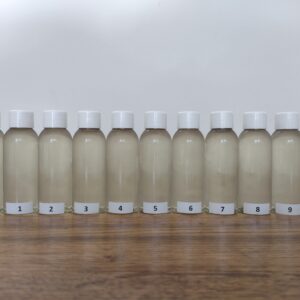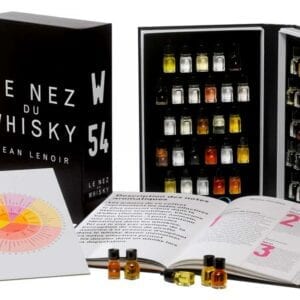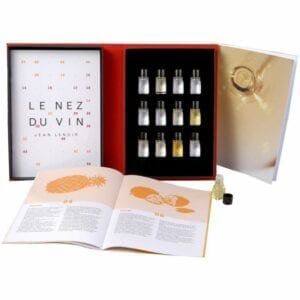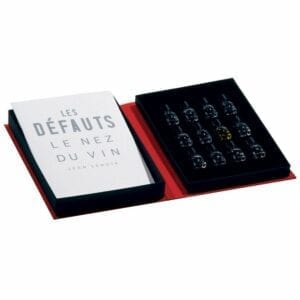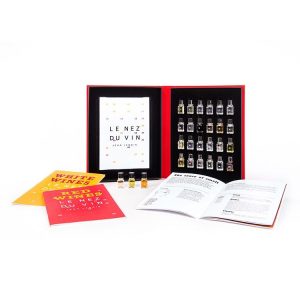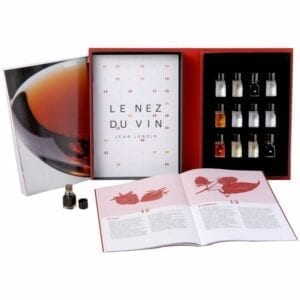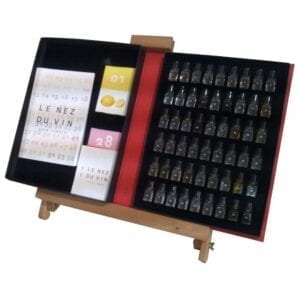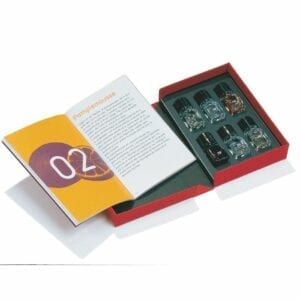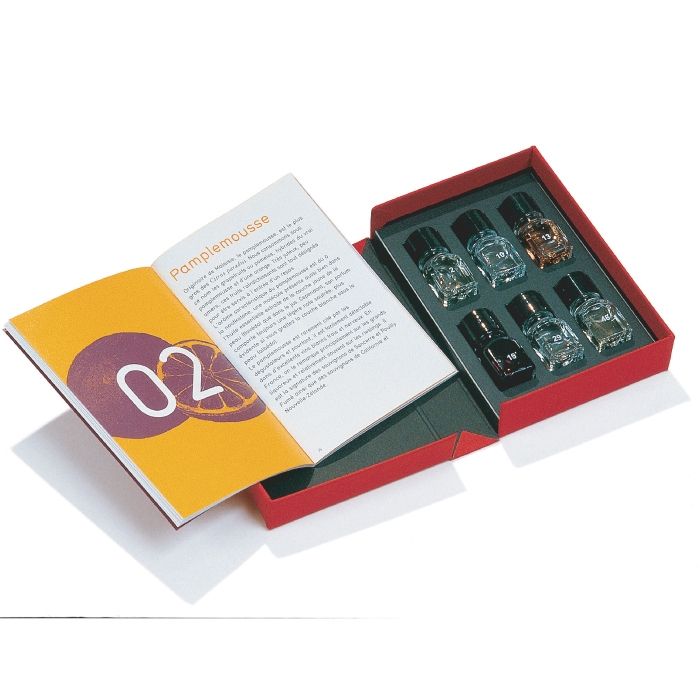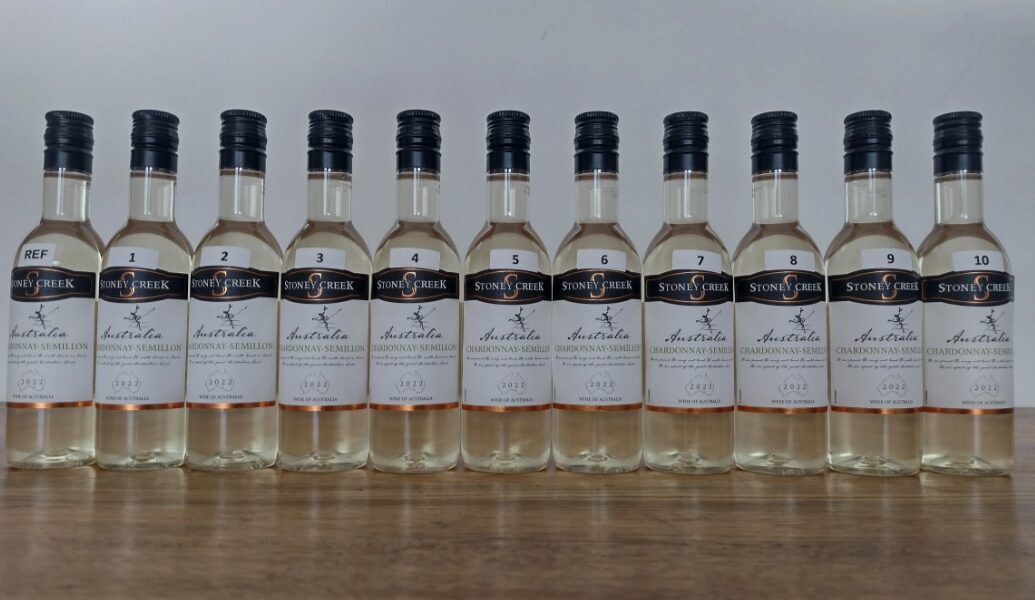
Are you looking for a wine aroma set? We supply various wine aroma sets such as the white wine set, red wine set and a set with wrong aromas. On this page an explanation about wine aromas and which products we offer in this area.
What is a wine aroma set?
A wine aroma set is a collection of different scents or aromas often used to practice and recognize the aroma profiles of different wines. The purpose of an aroma set is to develop your sense of smell and to help you identify and name the different olfactory components in wine.
Sets with bottles of wine and added aromas
We supply wine aroma kits with which you learn to identify 10 important aromas in wine. The sets consist of 11 bottles of (same) wine where 1 bottle is the reference sample. The other 10 bottles also contain an added aroma in addition to the wine. Each flavoring added to the bottles is in a realistic, challenging amount: the same level you would find it naturally in wine.
Le Nez du Vin wine aroma sets
In addition to the above aroma sets, we also supply the boxes from Le Nez du Vin, these are various sets that consist of fragrance jars containing the different aromas.
Aromas in white wine
White wine aromas can vary depending on grape variety, winemaking techniques and environmental factors. Here are some common aromas you may encounter in white wines:
- Fruity aromas: White wines can have a wide variety of fruity aromas, such as citrus fruits (lemon, lime, grapefruit), stone fruits (peach, apricot, nectarine), tropical fruits (pineapple, mango, passion fruit), and apples or pears.
- Floral aromas: White wines can also have floral aromas such as honeysuckle, jasmine, orange blossom, acacia and hawthorn. These aromas contribute to the freshness and complexity of the wine.
- Spicy aromas: Some white wines may have subtle spicy aromas such as vanilla, cinnamon, ginger, nutmeg or white pepper. These aromas can come from wooden barrels in which the wine has been aged or from the grapes themselves.
- Mineral aromas: White wines, especially those from cooler climates, can have mineral aromas such as chalk, pebble, slate, or wet rock. These aromas add an earthy and complex dimension to the wine.
- Spicy aromas: Some white wines can also have spicy aromas, such as fennel, anise, cloves or mint. These aromas can come from the grapes themselves or from the use of specific strains of yeast during fermentation.
It is important to note that the presence and intensity of these aromas can vary between different white wines and even within the same wine style. In addition, individual taste perceptions can differ, so the aromas one perceives can be subjective. Practicing with this white wine aroma kit can help increase your awareness and knowledge of these aromas.
Aromas in red wine
Some common aromas you may encounter in red wines:
- Red Fruit: Red wines can have a wide variety of red fruit flavors such as strawberry, raspberry, cherry, red currant, and cranberry. These aromas are often fresh and lively.
- Black fruit: Many red wines also have dark fruit aromas, such as black cherries, blackberries, blueberries, and plums. These aromas are often riper and more intense than red fruit aromas.
- Spicy aromas: Red wines can have different spicy aromas, such as pepper, cinnamon, cloves, vanilla and nutmeg. These aromas can come from both the grapes themselves and from the aging process in wooden barrels.
- Earthy aromas: Some red wines have earthy aromas, such as mushrooms, truffles, autumn leaves, forest soil and humus. These aromas add complexity and depth to the wine.
- Wood aromas: Red wines aged in oak barrels can develop aromas of vanilla, cedar, tobacco, coffee and chocolate. These aromas are often associated with wines that have undergone some degree of wood aging.
- Spicy aromas: Some red wines can also have spicy aromas, such as bay leaf, thyme, rosemary, oregano and black pepper. These aromas can come from the grapes themselves or from the use of specific strains of yeast during fermentation.
As with white wines, the presence and intensity of these aromas can vary between different red wines and within the same wine style. In addition, individual taste perceptions may differ. Practicing with this red wine aroma set can help you improve your ability to recognize and name these aromas.
Wrong aromas in wine
There are also wrong aromas in wine, which make wines less pleasant to drink. These off-flavors are often referred to as “wine faults” and can have a variety of causes. Here are some common off-flavors in wine:
- Corky taste/aroma: This is usually caused by a chemical compound called 2,4,6-trichloroanisole (TCA), which may be present in corks or other materials that come into contact with the wine, such as wooden barrels. A wine with a corky taste or aroma smells musty, moldy, or like wet cardboard.
- Oxidation: When wine is exposed to too much oxygen, it can oxidize. This results in aromas of sherry, vinegar or old apple. The wine may turn brown and lose its freshness and fruity character.
- Sulfurous aromas: Too much sulfur, either during wine production or from improper storage, can result in sulfurous aromas such as rotten eggs, onions, or cooked cabbage. These aromas can also occur due to microbial problems during fermentation.
- Maderization: This occurs when the wine is exposed to excessive heat. The wine can then develop caramel-like aromas, similar to Madeira wines.
- Acetic acid: As a result of acetobacter contamination, wine can develop a strong acetic smell and taste, similar to vinegar.
Recognizing off-flavors in wine can sometimes be tricky, especially if you’re unfamiliar with how they manifest. However, there are some clues that could indicate a wine error:
- Unpleasant Odour: If the wine has a musty, moldy, vinegary, or unpleasant odor that does not match the expected aroma of the wine, this may indicate a fault.
- Off-flavor: Taste the wine and look for unwanted flavors such as corky taste, acetic acid, oxidation, or other off-flavors that differ from what you would expect.
- Visual Indicators: Some faults may also be visible, such as a cloudy wine, a brown color in a young white wine, or an unusually dark color in a red wine.
Practicing with this faults aroma set can help you recognize the wrong aromas.
Learning to recognize aromas in wine with the help of a wine aroma set
With the wine aroma sets you can train yourself to recognize the different aromas. If you would like to follow a masterclass (training) in the field of wine aromas, please feel free to contact us for the possibilities.

